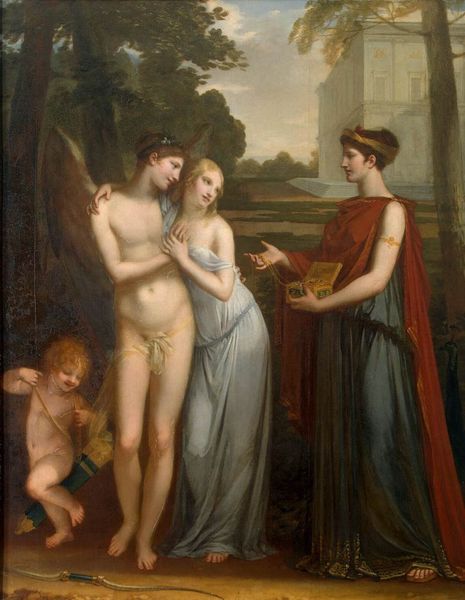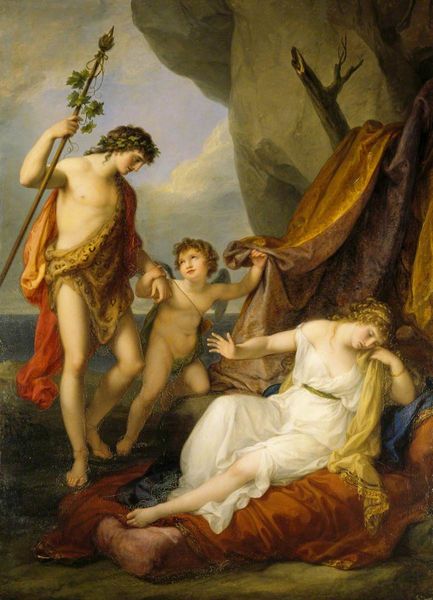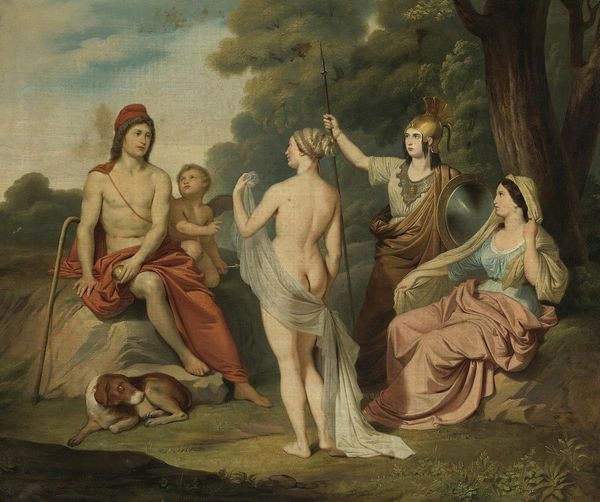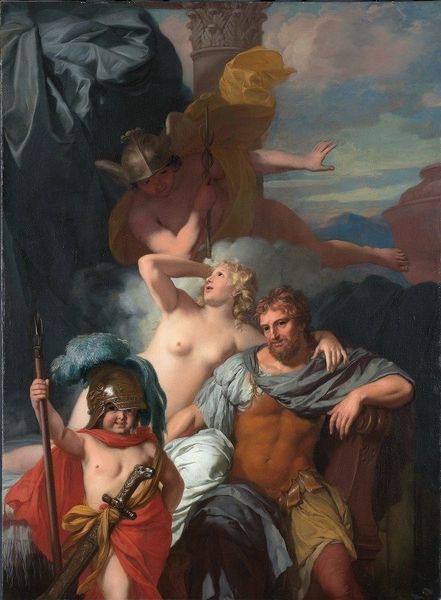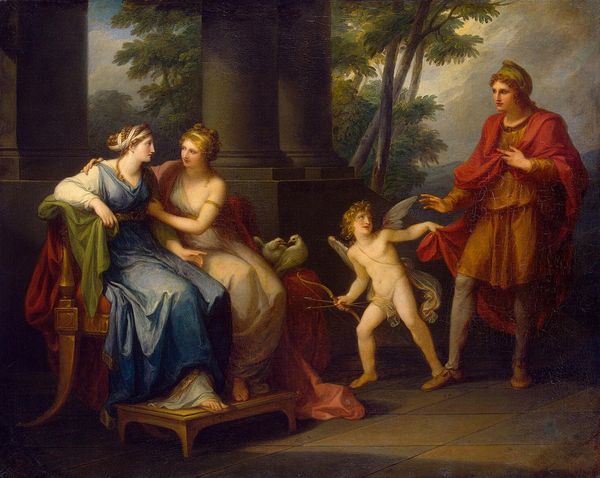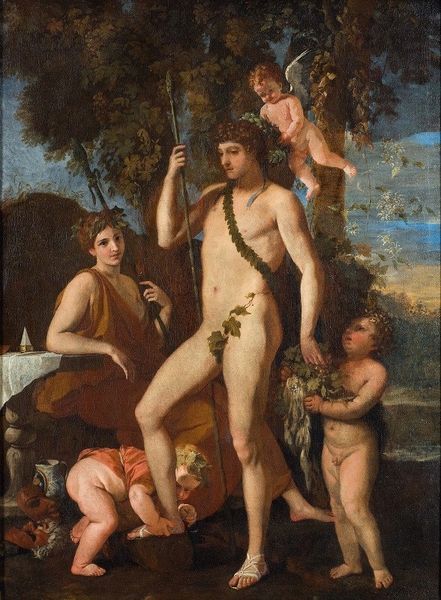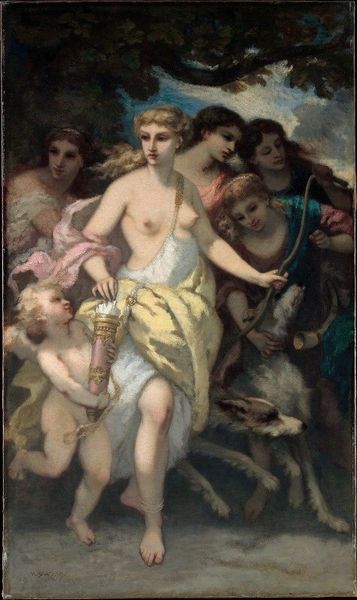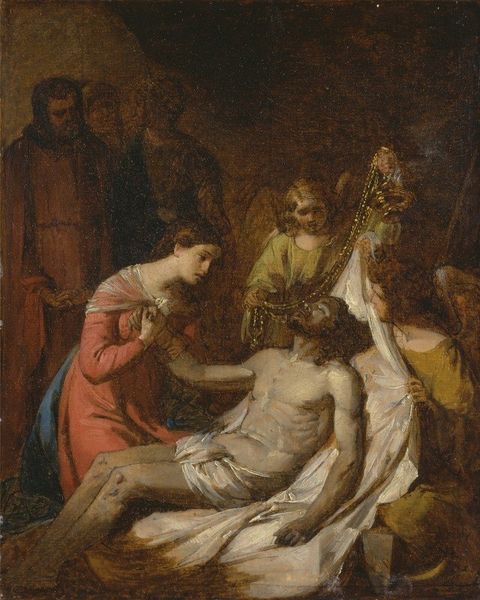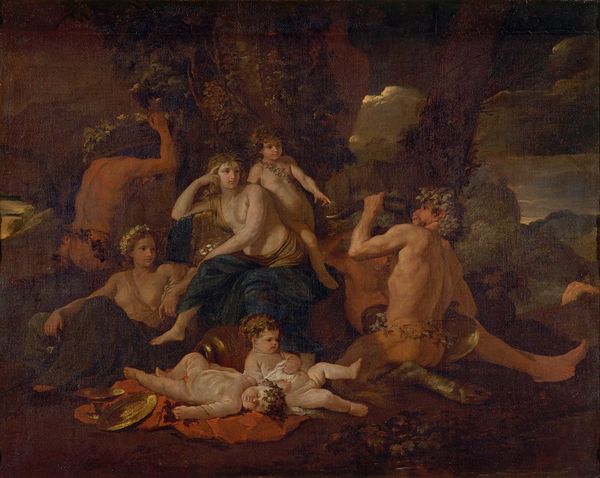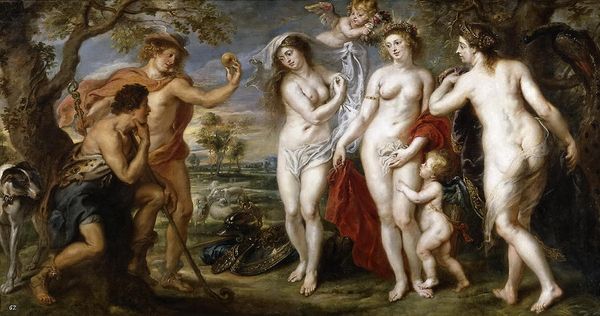
#
gouache
#
green tone
#
possibly oil pastel
#
oil painting
#
acrylic on canvas
#
underpainting
#
mythology
#
painting painterly
#
animal drawing portrait
#
watercolor
#
fine art portrait
Copyright: Public Domain: Artvee
Curator: Looking at Prud'hon’s canvas from circa 1804, “Innocence Preferring Love and Riches”, the first thing I notice is the palpable contrast between light and shadow. What jumps out at you? Editor: The muted green tone, like an aged fresco. I'm immediately thinking about the pigments available at that time and the possible methods used to achieve that hazy, almost dreamlike finish. It gives the entire scene a sort of ethereal quality, but also a kind of somber stillness. Curator: The context, of course, is vital. Painted during a time of massive social upheaval, we can view the scene through the lens of Revolutionary ideals clashing with lingering aristocratic values. Prud'hon stages a classical dilemma: youthful innocence choosing between the allure of love and the security of wealth. Editor: I am wondering how Prud'hon layered the pigments and what this suggests about workshop practice at that time. It appears that Prud'hon labored significantly on the figures. But what type of underpainting was employed and was the final painterly technique chosen deliberately? Curator: The female figures are also quite striking. We have Venus embracing Eros contrasted against the figure of a fully robed woman to the right extending a chest with jewelry. Both women appear as allegorical representations, caught at a crucial moment. Was the artist commenting on women's agency in early 19th-century French society? Editor: Let's talk about the location. Is it set in a classical-looking location with a Roman facade? This seems a stage constructed of props—is Prud’hon making a comment about this setting and these very traditional roles? Curator: Prud'hon certainly invites such speculation, playing with our understanding of beauty, power, and moral choices, especially considering the turbulent gender politics of the period. His delicate brushwork almost serves as a visual commentary on the precarious balance between these forces. Editor: For me, focusing on Prud’hon’s technique opens a whole other aspect for understanding his art and for considering art historical practices in this period, with many of the artist's decisions shaped by materials. Curator: I agree that exploring Prud'hon's approach is vital, too, of course. He manages to bridge the classical and the contemporary in fascinating ways, even to this day, sparking debate and new interpretations. Editor: I agree; hopefully our observations have shed light on those complexities today.
Comments
No comments
Be the first to comment and join the conversation on the ultimate creative platform.
